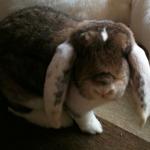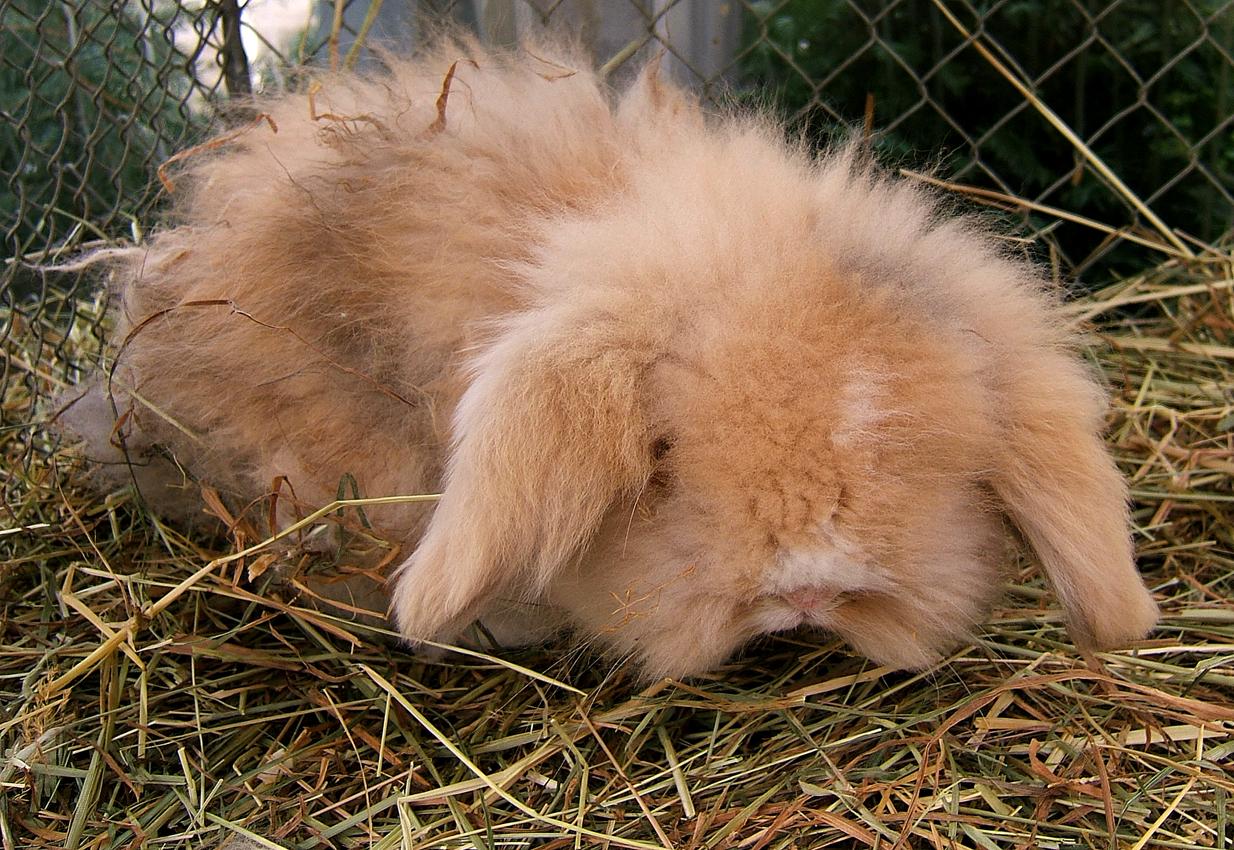Lop Rabbit

A Lop Rabbit or lop-eared rabbits are rabbits with ears that droops. Their large floppy ears make them easily recognizable. The scientific name for this rabbit is Oryctolagus Cuniculus. A Lop’s head resembles that of a male sheep in profile. For this reason, the Lop carries two distinct names, Widder in German meaning the ram Aries, and Belier in French meaning Ram.
Only 15% of the different Lop -eared breeds are recognised by the American Rabbit Breeder’s Association (ARBA) or the British Rabbit Council (BRC).
- Europe
- France
Physical appearance
A Lop-eared rabbit has a voluminous and wide head. Its main standout characteristics are the two floppy long ears on either side of its head. When a lop-eared rabbit is a baby, its ears are erect. With the passing of time, its ears fall gradually. They are normally medium in size, weighing between 5 and 7 kilograms.
The females, in addition to being slightly smaller, do not have a dewlap like the males do.
These rabbits can be found in a wide range of colors including white, gray or brown. In addition, and depending on its country of breeding origin, it may present distinct physical characteristics. Take note on these different types of Lop-eared rabbits;
- French Lop- It stands out for its great weight and size, its ears are especially large.
- English Lop- The ears of this Belier type are very large in relation to its body. Its ears have been able to measure between 55 and 64 cm.
- Holland Lop- This Lop-eared is quite small and does not usually exceed 2 kg.
- German Lop - A little bigger than the Dutch Belier, although it is still small.
- Cashmere Lop - Has longish and extremely soft hair.
- Lion's Head Lop - Very hairy and exotic.
Behavior
These animals are known to be docile and calm lagomorph types. They are said to be especially sweet and meek specimens. This tranquil animal can live in both a flat or house with a calm and harmonious environment.
When it comes to your rabbit’s safety, you should always be careful to avoid any conflicts with other animals in the house, such as cats. Make sure both animals are well socialized among each other. You have to make an effort to encourage and good and peaceful environment.
Caring for a Lop Rabbit
The care of the rabbit is fundamental for it to develop properly. It is essential that a Lop rabbot has a wide cage as well as ample space to play and run. It is very important that your Lop exercises its muscles. If your Lop rabbit is not in a secure environment you should always monitor it, making sure it does not accidentally chew on cables or similar dangerous objects.
It is important to place wood or sawdust in its cage, these materials help to keep the cage clean by absorbing urine. A rabbit must have something to gnaw on, this is in order to prevent abnormal teeth growth. You must also always make sure there is a feeder and drinker in its cage, as well as a nest where it is able to hide and rest at night. This rabbit needs to live in a temperate environment where temperature doesn’t change drastically.
Frequency of coat brushing will depend on the breed. However all of these rabbits need to be brushed in order to avoid tangles, a dirty coat and excessive dead hair. You do not need to bathe your Lop-eared rabbit as they groom themselves. However, If you do notice dirt on their fur, you can wipe it off with a cloth.
If your rabbit doesn’t exercise enough you will find that it might suffer from extreme nail growth. In this case you should cut its nails. If you don’t know how to do this yourself you can ask your veterinarian.
Lastly, you should remember the importance of cleaning your rabbit’s cage as much as possible. If a rabbit lives in its own urine infested space for too long it risks the chance of catching infection such as fungal infections.
Feeding a Lop rabbit
Belier rabbits love to eat, it is for this reason that its feed needs to be managed in order to avoid obesity. We advise you to carefully calculate the amount of feed that your rabbit needs, as well as dividing its meals into 3 servings a day. In addition, this act of dividing food improves digestion.
Your Lop rabbit should always have plenty of water available to it throughout the day. We recommend using typical cage bottles for rodent or large lagomorph bowls.
Health
A lop rabbit usually lives between an average of 8 or 10 years. However, the life expectancy of a rabbit does depend on certain factors, such as: diet, care or any previous or current health issues.
In order to prevent the risk of disease we suggest going to your veterinarian to administer all necessary vaccinations. The vaccinations immunize rabbits against certain viruses. Here are common disease that can affect a Lop rabbit;
- Scabies: This is a mite that directly attacks the skin of an animal. Make should your rabbit follows a strict deworming schedule and is checked for mites after spending time outside.
- Red urine: Usually due to a deficit of nutrients in the diet. This might also be a sign of a urinary infection.
- Coccidiosis: caused by microorganisms called coccids, a parasite that is easily spread through infected feces. This can cause severe diarrhea and dehydration. If you notice these symptoms we suggest visiting you vet as soon as possible as this can be treated as long as you are fast acting.
- Pneumonia: Usually occurs in colder seasons of the year, specifically we leave our pet exposed to drafts.
- Corns or Calluses: These occur when the rabbit is physically inactive. If it spends too much time in its cage or becomes obese, corns or calluses can appear, especially on its hind legs.
- Abnormal tooth growth: A rabbit’s teeth never stop growing therefore if they do not have anything to gnaw on, as they do in nature, their teeth can grow exponentially. This growth can cause severe dental problems and can be extremely painful for the animal. Therefore it is very important that you provide your rabbit with hay, grass or alfafla to chew on.
Lop Rabbit photos












